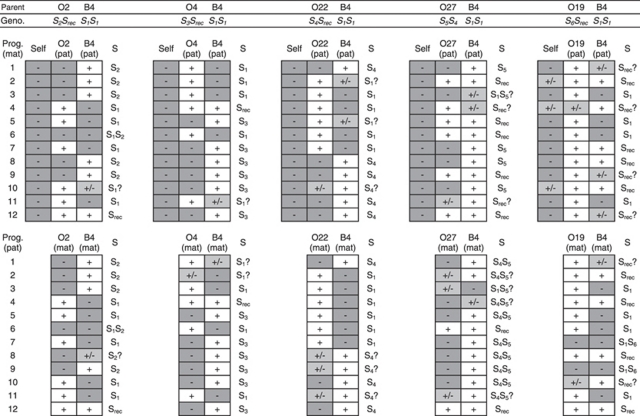Figure 3.
Self-incompatibility tests and backcross compatibility results for five Senecio squalidus progenies derived from a cross between an S1S1 genotype (B4) and individuals with S phenotypes representing five additional S alleles from an Oxford population (see legend to Figure 1). The top two rows list parental individuals and their genotypes for each cross. Genotypes marked ‘Srec' indicate an unidentified S allele that is either recessive or equivalent to the other expressed allele in that individual. The boxed symbols are semi-diallels of cross results for backcrosses between progeny and parental individuals. Progenies are listed down the rows and selfings and parents are listed above their diallel cross results. Crosses with individuals acting as maternal and paternal are indicated by ‘(mat)' and ‘(pat)' respectively. Reciprocal cross results are placed in equivalent positions in the top and bottom rows of diallels for ease of comparison. Dark grey-shaded negatives indicate incompatible crosses with less than two fruits. Non-shaded pluses indicate compatible crosses with more than 10 fruits. Pale grey-shaded pluses and negatives indicate indeterminate crosses with 2–10 fruits. Observed progeny S phenotypes are listed to the right of the diallels in the columns labelled ‘S'. Uncertain progeny S phenotypes that included indeterminate crosses are marked with ‘?' the S phenotype decision for these progenies was made to coincide with the reciprocal maternal or paternal cross result or to minimize the number of different S phenotypes in the progeny array.

